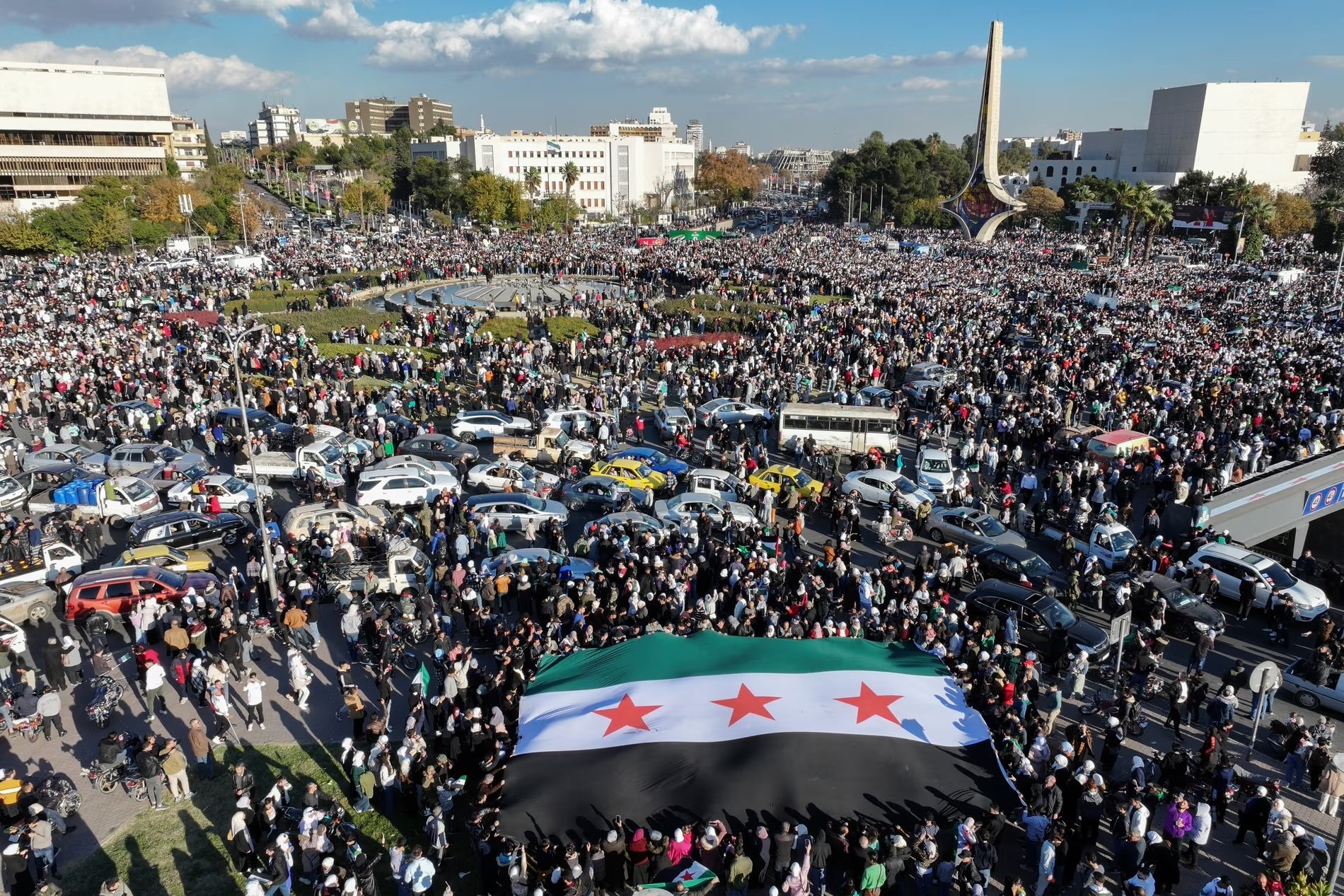
After Assad Volume 1
An overview of Syria’s complex transition
January 2025
Executive summary
In the month after Bashar al-Assad’s regime collapsed in early December 2024, Syria’s future has rapidly transformed in a sudden onset transitional phase that presents both opportunities and formidable challenges. Hay’at Tahrir al-Sham (HTS) and other opposition groups, led by Ahmed al-Sharaa (previously referred to as Abu Mohamad al-Jolani, his nom de guerre), secured a swift victory over Aleppo, Damascus, and the southern governorates, bringing decades of Assad’s brutal reign to a close. Nevertheless, Syria remains a nation that is riven by systemic instability, economic collapse, fractured governance, and humanitarian crises.
The transitional government has already begun implementing measures to stabilize the country. Statements that reinforce personal freedoms, such as prohibitions on interference with women’s attire and commitments to safeguard minority rights, are among the initiatives that aim to foster inclusivity and pluralism. Progress has also been made to restore public services, as key ministries have reopened, fuel stations have resumed operations, and bread has been made available outside of restrictive distribution systems. Plans for free-market reforms indicate potential long-term development, while promises of a 400% wage increase for public sector employees could alleviate economic strain. Displaced populations and conflict-affected communities have received critical aid from international partners, such as the UK, EU, and Gulf states such as Qatar and Saudi Arabia, who have bolstered humanitarian efforts.
However, there are formidable obstacles to success. Sectarian fears and the proliferation of weapons continue to undermine efforts to establish centralized authority, resulting in fragile security. Similarly, governance challenges continue to be acute. The lack of transparency and inclusivity in the transitional appointments and sensitive roles awarded to HTS-linked figures have been a source of concern, as Syrian Salvation Government (SSG) ministers have dominated their respective positions. Hyperinflation, disrupted supply chains, and poverty, which affect 90% of the population, are the economic challenges that Syria is currently facing. The healthcare system, which has been decimated by years of conflict, is struggling to meet basic requirements, while energy and resource shortages are exacerbated by infrastructure damage, which is estimated at $120 billion. The humanitarian situation remains dire, with over 16 million individuals in need, 7.2 million displaced, and pervasive food insecurity.
Given these obstacles, Syria’s future stability and the reconstruction of its social, economic, and political infrastructure necessitate immediate comprehensive reforms and sustained international assistance. Now more than ever, it is essential to monitor Syria’s transition to be able to facilitate informed decision-making. This report delves into the transitional government’s initial actions to resolve emerging needs, while also identifying the persistent and future challenges. It examines key themes and sectors. It serves as the foundation for a series of reports in which CA-SYR will delve deeper into specific themes, providing a more comprehensive understanding of Syria’s current trajectory and the potential implications of these developments. Ultimately, the objective of this series is to provide response actors and analysts with an analytical framework that will enable them to monitor the changing dynamics and key indicators influencing the future of Syria, thereby guiding the development of effective strategies and interventions.

